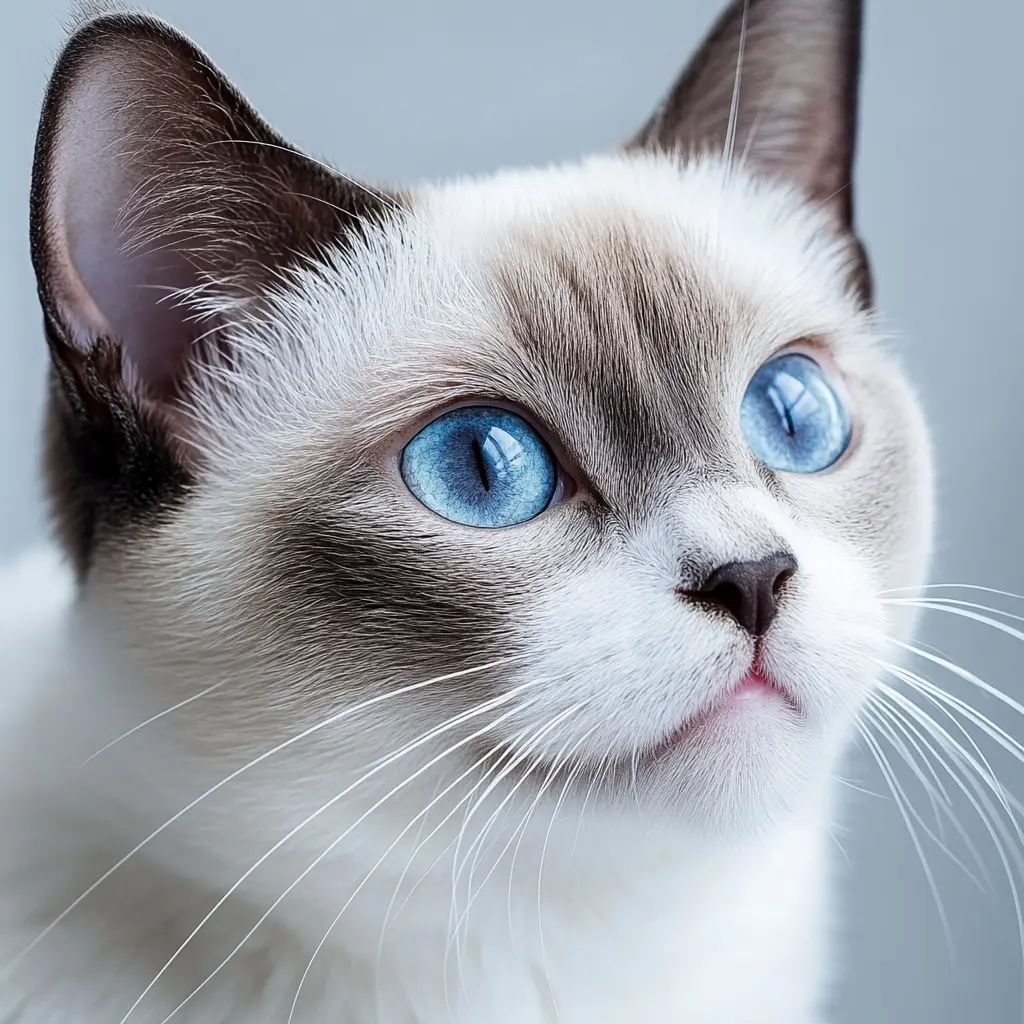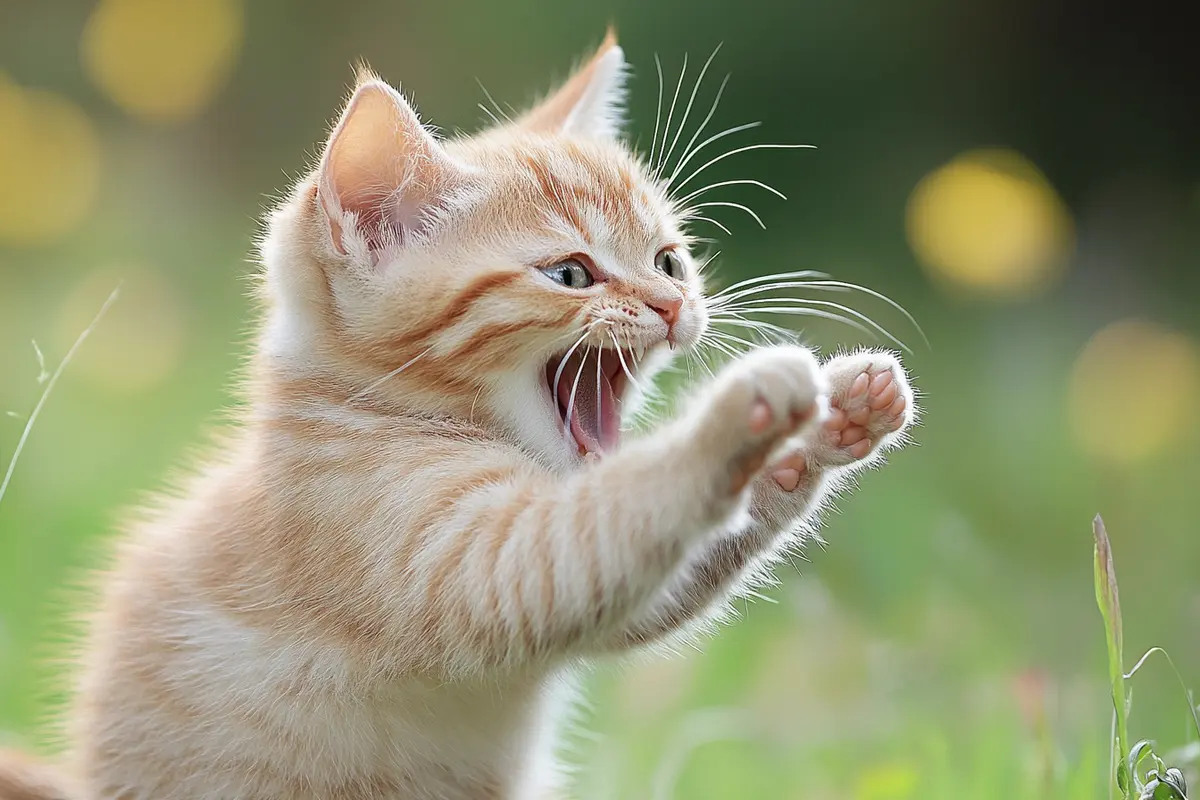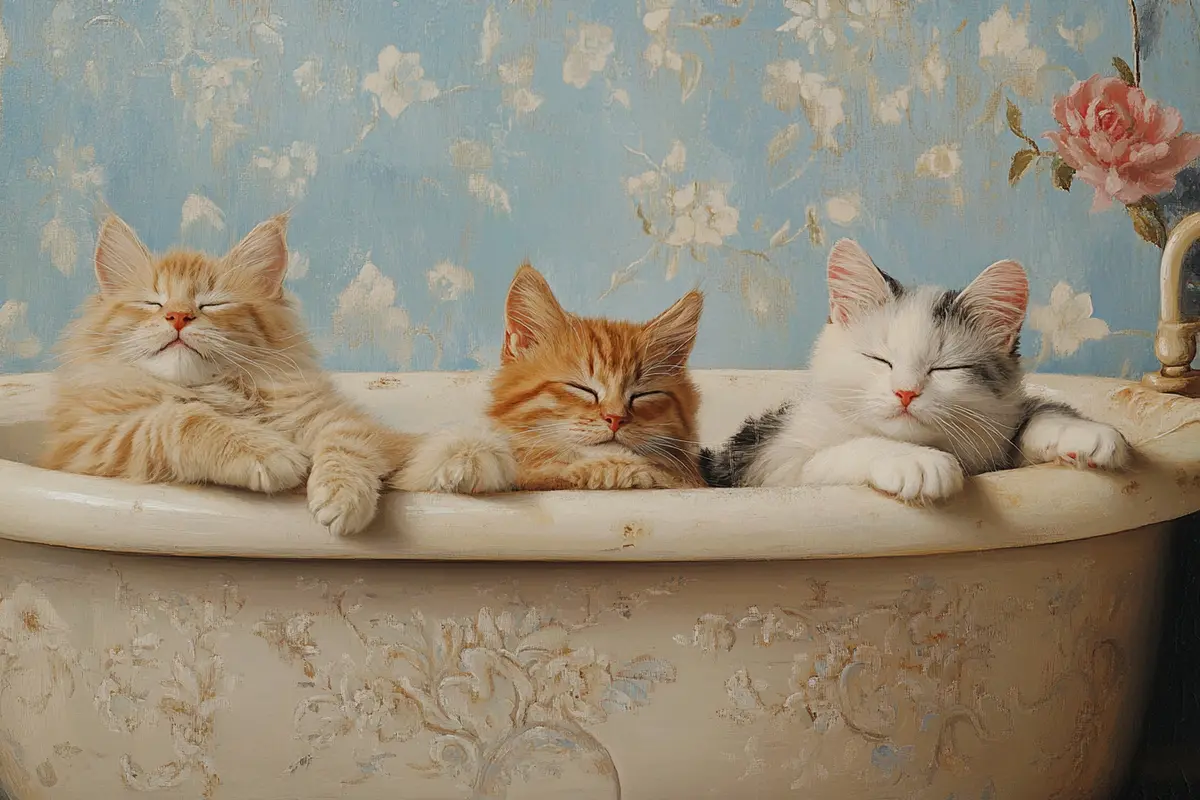Understanding cat behavior can often feel like deciphering a complex code. Why does your feline friend purr contentedly one moment and hiss defensively the next? This comprehensive guide delves deep into the fascinating world of cat behavior, exploring the nuances behind their vocalizations, body language, and unique quirks. This guide will help you build a stronger bond with your cat by answering the question: Why do cats purr, meow, or hiss?
Table of Contents
1. Introduction: Decoding Cat Behavior
Understanding cat behavior is crucial for any cat owner. Because it allows you to form a stronger bond with your feline companion. Consequently, being able to understand why cats purr, meow, or hiss enriches your relationship. Ultimately, this will make your cat feel safer and happier. Learning to read their signals transforms you into a more attentive and responsive caregiver. Therefore, let’s explore the many facets of understanding cat behavior, from their soothing purrs to their occasional hisses, and gain a deeper insight into what makes our feline friends tick.
You might also like Building a Purr-fect Bond
2. The Purrfect Language: Understanding Why Cats Purr
Cats purr; it’s one of the most comforting sounds in the world. But understanding why cats purr is more complex than you might think. Indeed, the classic explanation is happiness. However, cats purr for a variety of reasons. The most prominent of which is comfort. Additionally, sometimes they do it because they are injured. Let’s explore the different dimensions of the feline purr.
The Science Behind the Purr
Scientists are still studying the exact mechanism behind a cat’s purr. Basically, it is known that the larynx and diaphragm are involved. As a result, the muscles in these areas vibrate as the cat breathes. Accordingly, this produces the characteristic purring sound. Consequently, these vibrations occur during both inhalation and exhalation. Another study shows that purring may involve a unique “neural oscillator”. Basically, this creates repetitive rhythmic signals in the brain.
Purring and Healing: The Therapeutic Benefits
Purring is not always a sign of contentment; cats also purr when they’re injured, stressed, or giving birth. This has led scientists to believe that purring has therapeutic properties. Consequently, the low-frequency vibrations (around 25-150 Hz) may promote bone and tissue healing. Additionally, these vibrations can help to reduce pain and promote muscle growth. Furthermore, it’s been suggested that exposure to these frequencies can even benefit humans.
When Purring Isn’t Always Happiness
While we often associate purring with happiness, it’s important to remember that context matters. However, if your cat is purring but also displaying signs of stress, such as flattened ears, dilated pupils, or a tucked tail, the purr might indicate self-soothing. In addition, understanding the situation and accompanying body language is key to understanding why cats purr. Similarly, a sick or injured cat may purr to release endorphins, which act as natural painkillers.
3. Meows and Murmurs: Interpreting Feline Vocalizations
While purring is a unique feline sound, meowing is the primary way cats communicate with humans. Therefore, understanding cat behavior means interpreting these vocalizations. Because meows can mean different things depending on their tone, volume, and context. As a result, you need to understand what your cat is trying to tell you.
The Many Meanings of a Meow
A cat’s meow is versatile, and can convey various messages. For example, a short, high-pitched meow can mean “hello” or “I want attention.” Meanwhile, a drawn-out meow may indicate that the cat wants something specific, like food or water. Additionally, some cats are naturally more talkative than others. Therefore, the frequency and type of meow can vary. However, any sudden changes in your cat’s meowing habits should be checked by a vet.
How Cats Use Meowing to Communicate with Humans
Interestingly, cats primarily use meowing to communicate with humans, not with other cats. Indeed, kittens meow to their mothers, but adult cats primarily use other forms of communication with each other, such as scent marking, body language, and hissing. Consequently, it seems that cats have learned to meow specifically to get our attention. Therefore, this is their clever way of getting their needs met.
You might also like 12 Powerful Lessons of Kindness, Friendship, and Resilience from Cats.
Different Meows for Different Needs
Moreover, understanding cat behavior includes differentiating between the different types of meows. For instance, a demanding meow is usually insistent and repetitive. This indicates the cat wants immediate attention, often for food. Further, a low-pitched meow could indicate displeasure or even aggression. Therefore, understanding these variations helps owners respond appropriately.
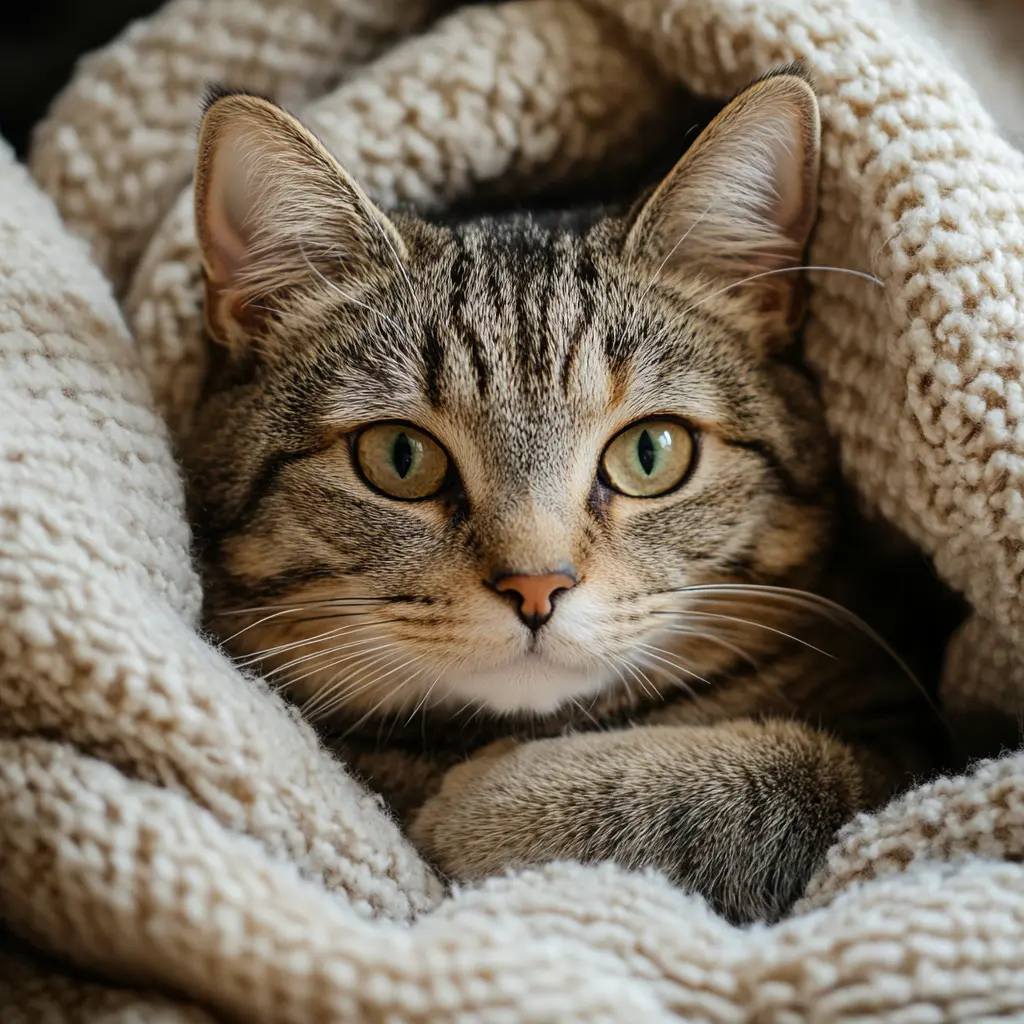
4. The Hiss and Growl: Understanding Defensive Cat Behavior
While purrs and meows are common, hissing and growling indicate that a cat is feeling threatened or scared. Subsequently, these defensive cat behaviors are vital for understanding cat behavior and ensuring the cat’s safety. Further, recognizing these signals and responding correctly can help defuse potentially dangerous situations.
Why Cats Hiss: Fear, Aggression, and Self-Defense
Cats hiss as a warning. Indeed, it’s their way of saying, “Back off!” Moreover, hissing is often accompanied by other signs of fear or aggression, such as flattened ears, a puffed-up tail, and dilated pupils. Basically, a cat might hiss if they feel cornered, threatened by another animal, or are in pain. However, it is a clear indication that the cat feels unsafe and needs space.
Reading the Body Language of a Hissing Cat
Additionally, the body language accompanying a hiss provides additional context. Indeed, if the cat is crouching low to the ground with its tail tucked, it is likely feeling fearful. Meanwhile, a cat that is standing tall with its fur on end is trying to appear larger and more intimidating. Consequently, observing these cues helps you determine the level of threat the cat perceives.
How to Respond to a Hissing Cat
When faced with a hissing cat, the best response is to give it space. Furthermore, avoid direct eye contact, which can be seen as confrontational. Moreover, speak softly and calmly, and slowly back away. Consequently, allow the cat to calm down and feel safe again. Eventually, it will stop hissing and relax once it feels the threat has passed.
5. Beyond Vocalizations: A Deeper Dive into Understanding Cat Behavior
However, understanding cat behavior extends far beyond vocalizations. Moreover, cats communicate through a complex language of body postures, facial expressions, and scent markings. Furthermore, paying attention to these subtle cues can provide a wealth of information about a cat’s emotional state and intentions.
Body Language Basics: Tail, Ears, and Eyes
A cat’s tail can be a great indicator of its mood. For instance, a tail held high usually means the cat is feeling confident and happy. Meanwhile, a twitching tail can indicate excitement or agitation. Additionally, a tucked tail signals fear or submission. Therefore, the position of the ears also provides clues. Indeed, ears that are forward and relaxed indicate a calm and attentive cat. However, ears that are flattened or turned to the side suggest fear or aggression. In conclusion, a cat’s eyes can also be revealing. As a result, dilated pupils can mean the cat is feeling excited, scared, or playful.
Scent Marking: The Feline Way of Claiming Territory
Cats use scent marking to establish their territory. This is done through scratching, urine spraying, and rubbing against objects. Basically, these behaviors deposit pheromones. These are chemical signals that communicate information to other cats. Moreover, scent marking helps cats feel secure in their environment. Additionally, it informs other cats of their presence.
Kneading, Head-Butting, and Other Quirky Behaviors
Many cats engage in behaviors that might seem strange to us, like kneading (pushing their paws into a soft surface) or head-butting (rubbing their head against people or objects). Consequently, these behaviors usually have roots in kittenhood. Kneading, for instance, mimics the behavior of nursing kittens. Furthermore, head-butting is a way for cats to deposit their scent. As a result, it shows affection and establishes a social bond. Therefore, understanding cat behavior involves recognizing these quirky actions as normal and even endearing.
6. Environmental Factors Influencing Cat Behavior
The environment plays a huge role in understanding cat behavior. Therefore, a cat’s surroundings can significantly impact its well-being and behavior. Consequently, creating a safe, stimulating, and comfortable environment can help reduce stress and promote positive cat behavior.
The Impact of Environment on a Cat’s Well-being
A stressful or boring environment can lead to a variety of behavior problems. Indeed, cats may become anxious, aggressive, or destructive if they don’t have enough mental and physical stimulation. Further, inadequate resources, such as food, water, and litter boxes, can also cause stress and conflict, especially in multi-cat households. As a result, understanding cat behavior means recognizing how the environment affects a cat’s well-being.
Creating a Cat-Friendly Home
Creating a cat-friendly home involves providing plenty of opportunities for the cat to express its natural behaviors. For example, scratching posts allow cats to groom their claws. Additionally, elevated perches let them observe their surroundings from a safe vantage point. In addition, interactive toys provide mental stimulation. As a result, these provisions help a cat feel safe and secure.
Managing Stress and Anxiety in Cats
Managing stress and anxiety involves identifying and addressing the root causes of the problem. For example, this includes providing a consistent routine. It also includes minimizing exposure to loud noises and other stressors. In addition, pheromone diffusers can also help create a calming environment. Therefore, understanding these needs helps your cat feel safe.
7. Health and Cat Behavior: What to Watch For
Moreover, health issues can significantly impact cat behavior. Indeed, changes in behavior can be early signs of an underlying medical condition. Consequently, it’s important to be aware of these signs and consult a veterinarian if you notice anything unusual.
How Medical Conditions Can Affect Cat Behavior
Various medical conditions can affect cat behavior. For example, urinary tract infections can cause a cat to urinate outside the litter box. In addition, dental pain can make a cat irritable and reluctant to eat. Therefore, cognitive dysfunction (dementia) can cause confusion, disorientation, and changes in sleep patterns. Subsequently, these health problems all impact a cat’s natural behavior.
Recognizing Signs of Pain or Discomfort
Cats are masters at hiding pain. However, there are subtle signs to look for. Such as decreased appetite, reduced activity level, hiding more than usual, and changes in grooming habits. Another sign can be altered posture or gait. Therefore, early detection and treatment can improve the cat’s quality of life.
When to Consult a Veterinarian
If you notice any sudden or significant changes in your cat’s behavior, it’s important to consult a veterinarian. For example, increased aggression or sudden fearfulness. The vet can perform a thorough examination to rule out any underlying medical conditions. Consequently, the vet can offer guidance on behavior modification techniques if needed.

8. The Role of Play in Understanding Cat Behavior
Play is a vital component of understanding cat behavior. Indeed, play is not only fun but also essential for a cat’s physical and mental health. Moreover, play allows cats to express their natural hunting instincts and provides mental stimulation.
Play as a Natural Instinct
Play is a natural instinct for cats. It mimics the behaviors they would use to hunt prey in the wild. Indeed, stalking, chasing, pouncing, and batting at toys are all part of a cat’s natural repertoire. Moreover, engaging in these activities helps cats stay physically fit and mentally sharp.
The Benefits of Play for Physical and Mental Health
Regular play sessions can help prevent obesity and other health problems. Furthermore, play provides mental stimulation that can help reduce boredom and prevent behavior issues. Additionally, playing with your cat strengthens the bond between you. Therefore, this creates a happy and relaxed environment.
Choosing the Right Toys and Activities
The best toys are those that engage a cat’s hunting instincts. For example, feather wands, laser pointers, and toy mice are all popular choices. In addition, it’s important to vary the toys and activities to keep the cat interested. This is because cats may become bored with the same old routine. Therefore, interactive toys, puzzle feeders, and even a simple cardboard box can provide hours of entertainment.
9. Social Dynamics: Understanding Cat Behavior in Multi-Cat Households
Understanding cat behavior is especially important in multi-cat households. Indeed, cats are solitary hunters. However, they can learn to coexist peacefully with other cats. Moreover, successful multi-cat households require careful management and attention to each cat’s individual needs.
Introducing New Cats: A Step-by-Step Guide
Introducing a new cat to an existing household should be done slowly and carefully. This is done by keeping the new cat separate in its own room for the first few days. Subsequently, this allows the cats to get used to each other’s scent without direct contact. Furthermore, gradually introduce them to each other. Moreover, you need to do this through supervised visits. As a result, this reduces the risk of aggression.
Managing Conflict and Promoting Harmony
Even with careful introductions, conflicts can arise between cats. Consequently, it’s important to provide enough resources. This includes food bowls, water dishes, litter boxes, and scratching posts, to minimize competition. Additionally, providing vertical space, such as cat trees, can help reduce stress.
Recognizing Signs of Stress in a Multi-Cat Environment
Signs of stress in a multi-cat environment can include hiding, decreased appetite, increased aggression, and changes in litter box habits. Furthermore, if you notice these signs, it’s important to intervene and address the underlying issues. Moreover, this includes providing more resources. In addition, separating the cats when necessary can help reduce tension and promote harmony.
10. Addressing Common Cat Behavior Problems
Many cat owners face behavior problems such as scratching, biting, and litter box avoidance. Understanding cat behavior is key to addressing these issues effectively. Moreover, identifying the root cause of the problem and implementing appropriate behavior modification techniques can lead to positive changes.
Scratching, Biting, and Other Undesirable Behaviors
Scratching is a natural behavior for cats. It helps them maintain their claws and mark their territory. However, if a cat is scratching furniture, it’s important to provide appropriate scratching posts and redirect the behavior. Furthermore, biting can be a sign of fear, aggression, or overstimulation. Therefore, it’s important to avoid situations that trigger biting and provide positive reinforcement for good behavior.
Understanding the Root Cause of Behavior Problems
Behavior problems are often symptoms of an underlying issue. For example, litter box avoidance can be caused by a medical condition. However, it could also be due to stress or an aversion to the litter box. Therefore, aggression can be a sign of fear, territoriality, or pain. Accordingly, identifying the root cause of the problem is essential for developing an effective solution.
Effective Strategies for Behavior Modification
Behavior modification techniques involve changing the cat’s environment and using positive reinforcement to encourage desirable behaviors. Furthermore, this includes providing scratching posts. It can also include cleaning the litter box more frequently. Positive reinforcement can also be used, like rewarding good behavior with treats or praise. Therefore, consistency and patience are key.
11. Conclusion: Embracing the Mystery and Joy of Understanding Cat Behavior
Understanding cat behavior is an ongoing journey. Cats are complex and fascinating creatures. Furthermore, by learning to interpret their vocalizations, body language, and behaviors, you can build a stronger bond with your feline companion. Ultimately, this creates a more harmonious and fulfilling relationship for both of you. Embrace the joy of understanding cat behavior, and you’ll unlock a whole new level of appreciation for these incredible animals.
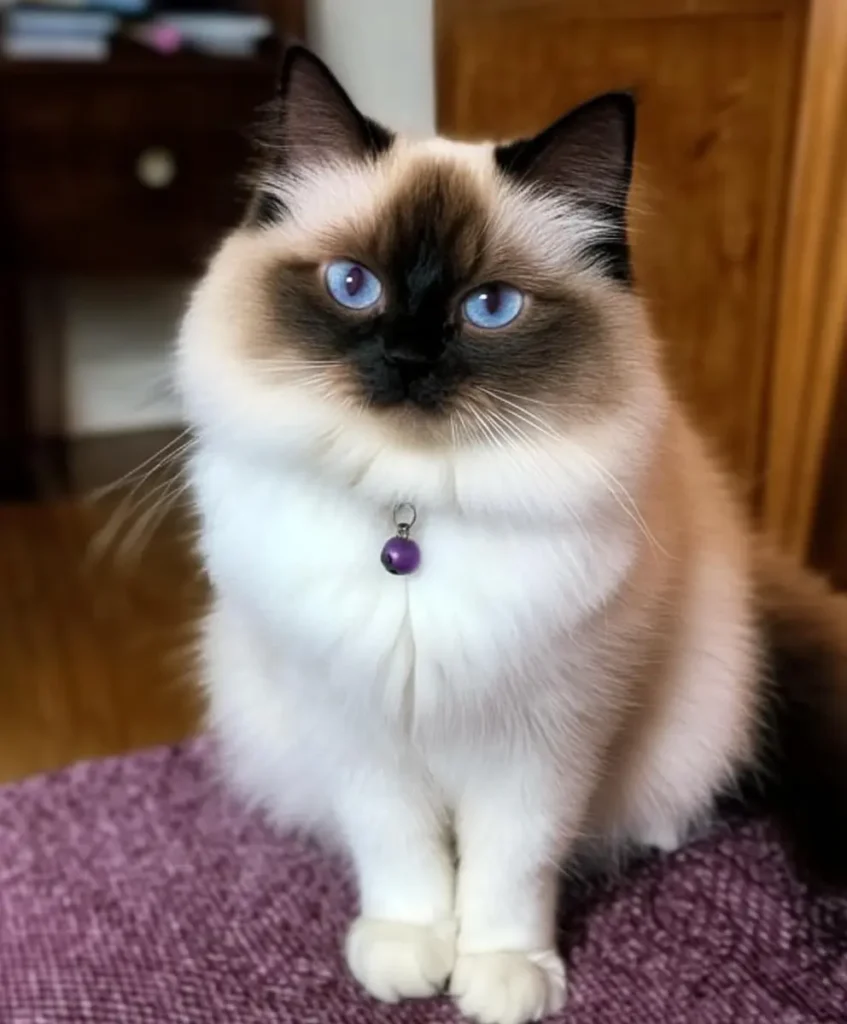
12. Frequently Asked Questions (FAQs)
Why does my cat meow and then hiss?
If your cat meows and then hisses, it’s likely feeling conflicted. The meow could be an attempt to get your attention or communicate a need. The hiss indicates fear or aggression. Assess the situation to determine the source of your cat’s discomfort.
Why does my cat purr instead of meow?
Cats primarily meow to communicate with humans. However, purring serves multiple purposes. Purring includes self-soothing, healing, and expressing contentment. A cat might purr instead of meowing if it’s feeling content. It may also do this if it’s trying to calm itself down.
Is it okay to hiss back at a cat?
Hissing back at a cat is generally not recommended. Hissing can escalate the situation and damage your relationship. Instead, give the cat space, speak calmly, and try to identify the cause of its distress.
Are cats really happy when they purr?
Purring often indicates happiness and contentment. Cats also purr when they are injured, stressed, or need comfort. Context is key. Observe your cat’s body language. Is the cat feeling happy and safe?
